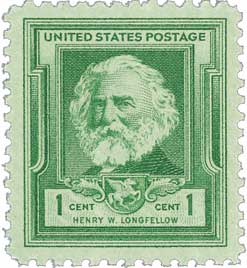
# 4124 FDC - 2007 39c Henry Wadsworth Longfellow
Henry Wadsworth Longfellow
City: New York, NY
Quantity Issued: 30,000,000
Birth Of Henry Wadsworth Longfellow
The second of eight children, Longfellow began attending school when he was just three years old. He was then sent to a private school at age six, where he was known for being very studious and fond of reading. He published his first poem, “The Battle of Lovell’s Pond,” in 1820.
Longfellow then entered Bowdoin College in 1822, when he was 15. While there he met and befriended fellow writer Nathaniel Hawthorne and future president Franklin Pierce. During his time there, Longfellow published nearly 40 poems. He graduated fourth in his class and delivered the student commencement address.
After graduation, Longfellow was offered the job of Professor of Modern Languages at the college. To prepare, he spent three years in Europe, visiting France, Spain, Italy, Germany, and England. During this time he learned French, Spanish, Portuguese, and German, mostly on his own. He also met Washington Irving in Madrid, who was impressed by his work and encouraged him to keep writing.
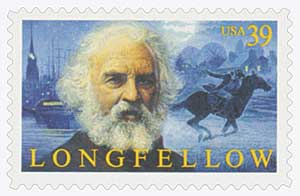
Upon returning to Bowdoin, Longfellow began teaching and also served as the school’s librarian. He used some of his time there to translate textbooks from French, Italian, and Spanish. Longfellow also published a travel book based on his European tour titled, Outre-Mer: A Pilgrimage Beyond the Sea.
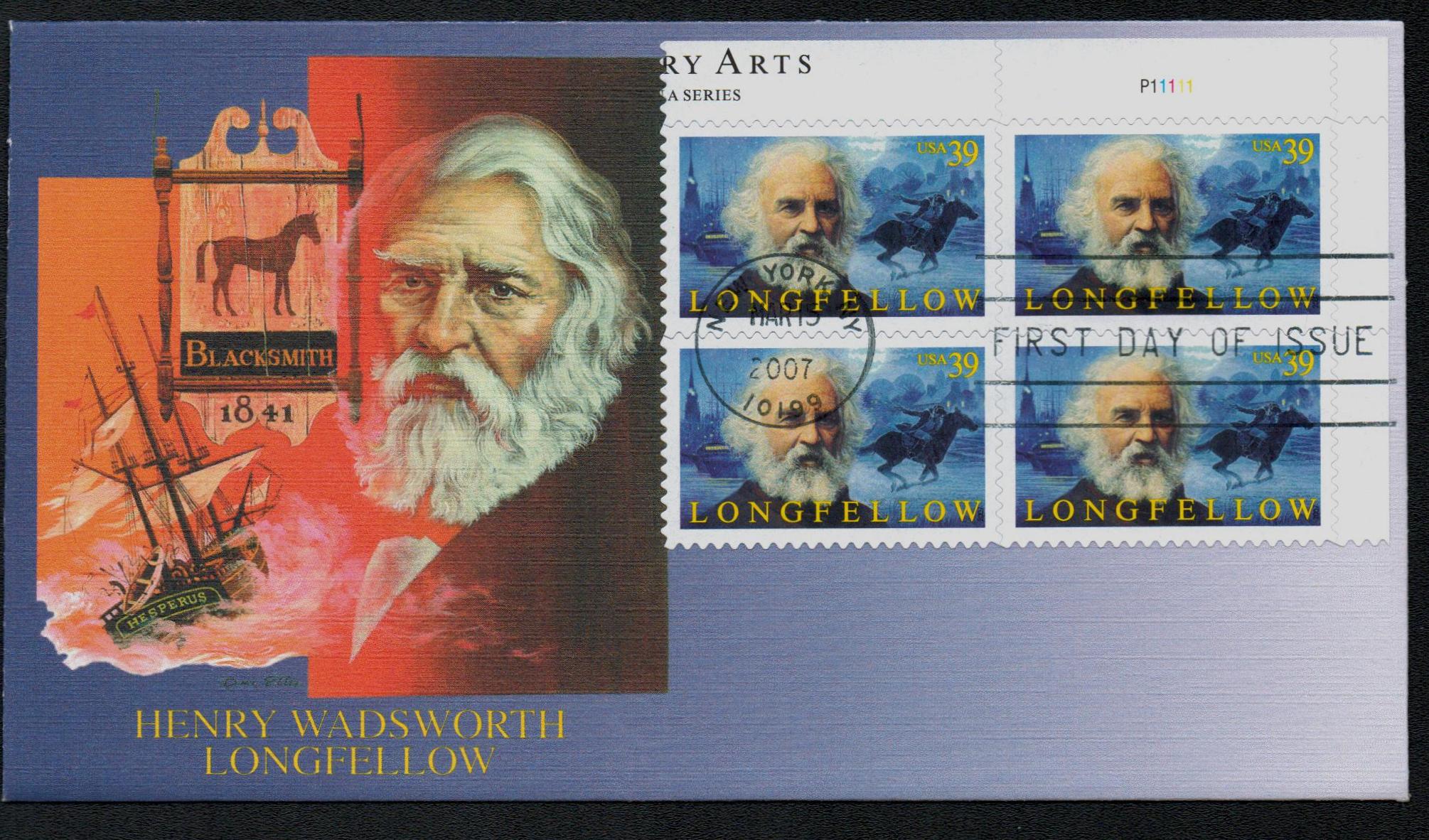
In 1834, the president of Harvard College invited Longfellow to become their Professor of Modern Languages. Once again, he went to Europe to prepare, learning German, Dutch, Danish, Swedish, Finnish, and Icelandic. His first wife, who accompanied him to Europe, died during that trip, leaving Longfellow distraught.
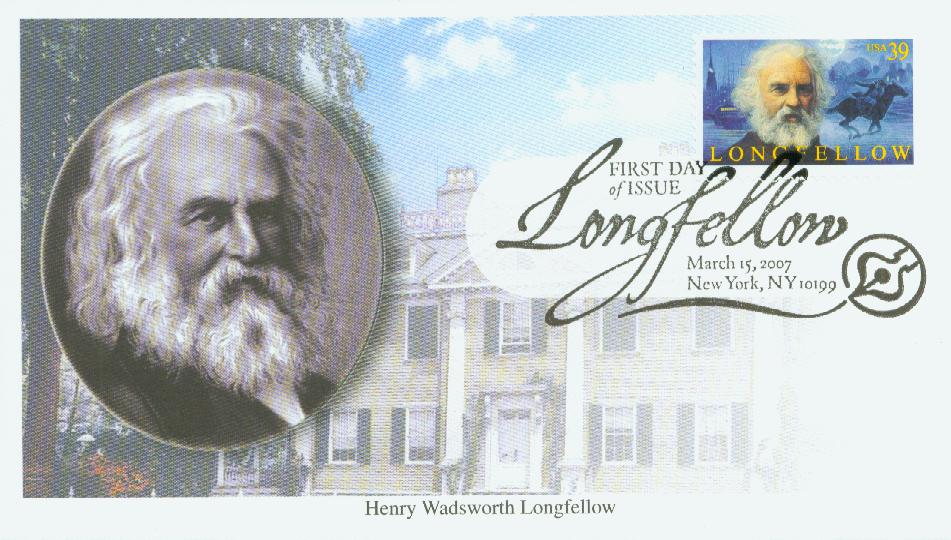
Upon returning to the US, Longfellow began writing more and started publishing his poetry in 1839. His first volume of poetry appeared in 1839, and his next, Ballads and Other Poems (1841), contained poems like “The Village Blacksmith,” that became familiar to generations of Americans. He also wrote longer works, such as “Evangeline” (1847), which established him as a popular narrative poet.
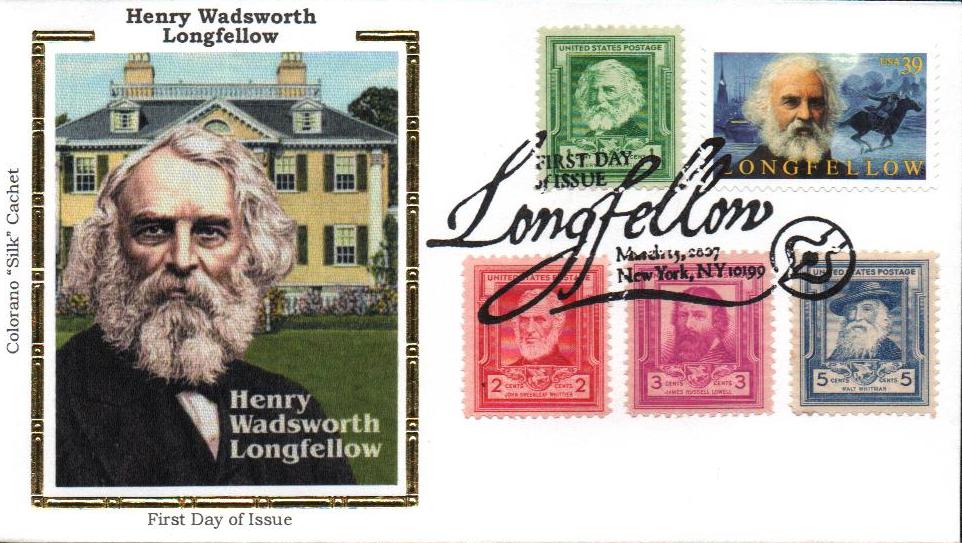
During his time at Harvard, Longfellow also began courting Frances Appleton. After seven years, she finally agreed to marry him and they had six children together. Longfellow left Harvard in 1854 to focus more on writing. He received an honorary doctorate of laws from Harvard in 1859. Longfellow also produced some of his most famous and epic works during this period, including “The Song of Hiawatha” (1855), “The Courtship of Miles Standish” (1858), and “Paul Revere’s Ride” (1860).
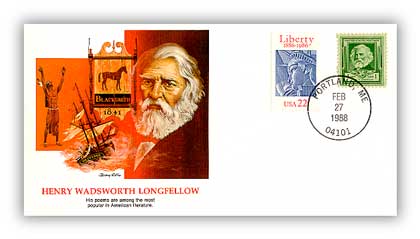
Longfellow notably also gained significant popularity in Europe. He was one of the most famous men in his day and received a private audience with the Queen of England when he traveled there. Reportedly, 10,000 copies of “The Courtship of Miles Standish” sold in London on a single day.
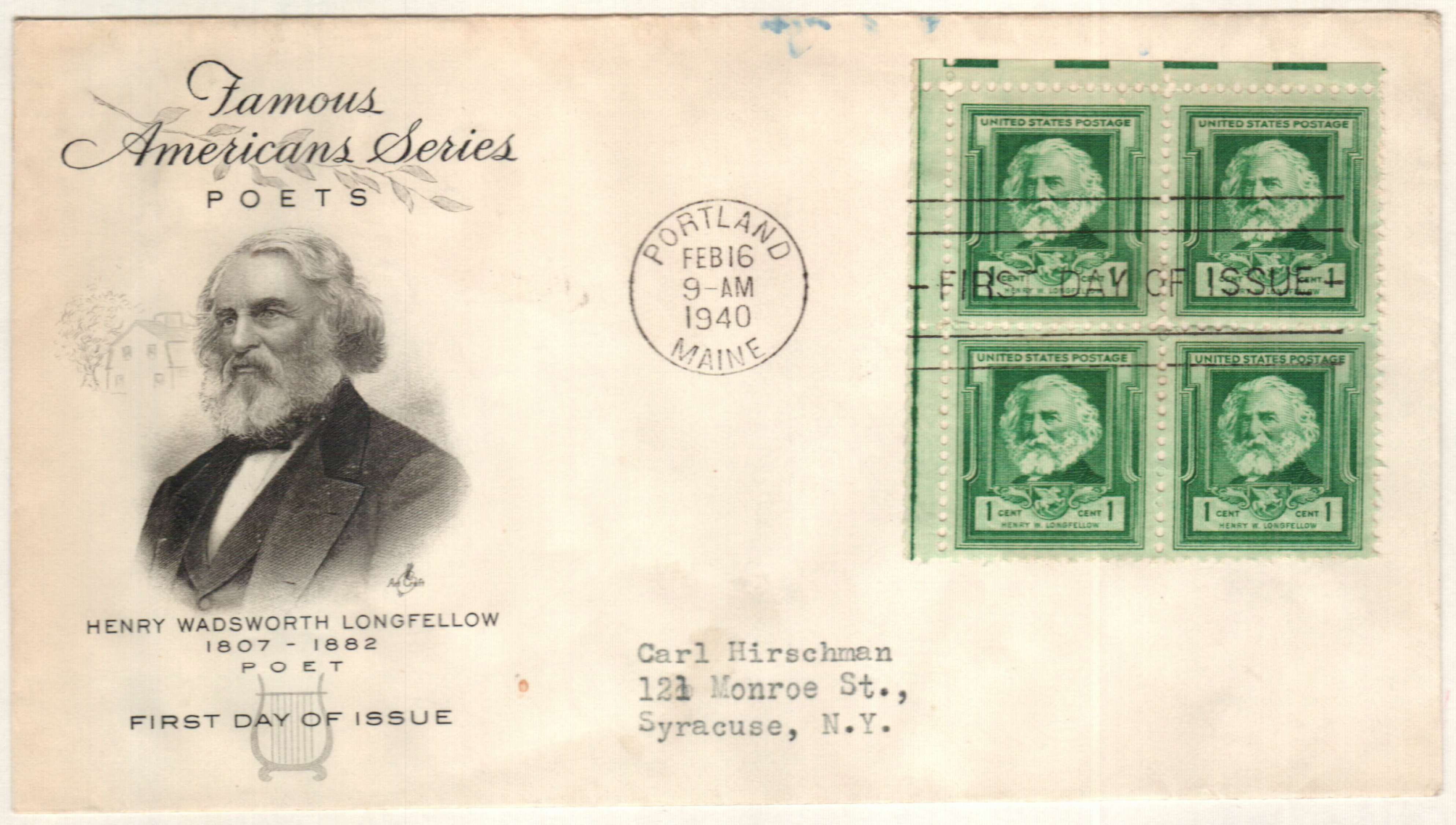
Longfellow’s wife died tragically after her dress caught fire in 1861. Longfellow never fully recovered from the loss. He begged not to be sent to an asylum and said that he was “inwardly bleeding to death.” His grief left him unable to write for some time, so he turned to translating Dante Alighieri’s Divine Comedy. His translation was popular and went through four printings in its first year alone.
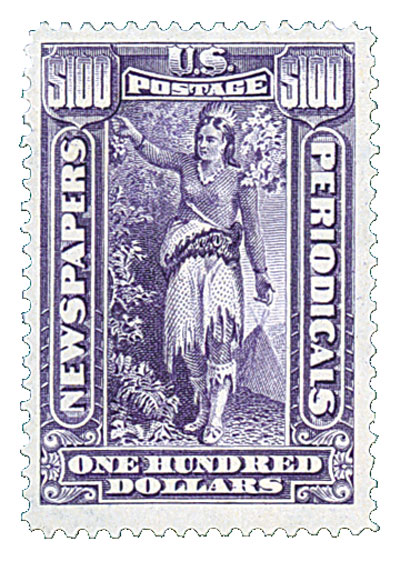
During the Civil War, Longfellow’s son was injured in battle, inspiring him to write the poem “Christmas Bells,” which was later the basis for the carol I Heard the Bells on Christmas Day. In 1874, his poem “The Hanging of the Crane” sold for $3,000, the most ever paid for a poem up to that time.
Longfellow died on March 24, 1882, after suffering from severe stomach pain, later diagnosed as peritonitis. In his final years, he had been translating the poetry of Michelangelo. It was later published in 1883. Longfellow was considered the most popular American poet of his day, with one friend saying, “no other poet was so fully recognized in his lifetime.”
Henry Wadsworth Longfellow
City: New York, NY
Quantity Issued: 30,000,000
Birth Of Henry Wadsworth Longfellow
The second of eight children, Longfellow began attending school when he was just three years old. He was then sent to a private school at age six, where he was known for being very studious and fond of reading. He published his first poem, “The Battle of Lovell’s Pond,” in 1820.
Longfellow then entered Bowdoin College in 1822, when he was 15. While there he met and befriended fellow writer Nathaniel Hawthorne and future president Franklin Pierce. During his time there, Longfellow published nearly 40 poems. He graduated fourth in his class and delivered the student commencement address.
After graduation, Longfellow was offered the job of Professor of Modern Languages at the college. To prepare, he spent three years in Europe, visiting France, Spain, Italy, Germany, and England. During this time he learned French, Spanish, Portuguese, and German, mostly on his own. He also met Washington Irving in Madrid, who was impressed by his work and encouraged him to keep writing.

Upon returning to Bowdoin, Longfellow began teaching and also served as the school’s librarian. He used some of his time there to translate textbooks from French, Italian, and Spanish. Longfellow also published a travel book based on his European tour titled, Outre-Mer: A Pilgrimage Beyond the Sea.

In 1834, the president of Harvard College invited Longfellow to become their Professor of Modern Languages. Once again, he went to Europe to prepare, learning German, Dutch, Danish, Swedish, Finnish, and Icelandic. His first wife, who accompanied him to Europe, died during that trip, leaving Longfellow distraught.

Upon returning to the US, Longfellow began writing more and started publishing his poetry in 1839. His first volume of poetry appeared in 1839, and his next, Ballads and Other Poems (1841), contained poems like “The Village Blacksmith,” that became familiar to generations of Americans. He also wrote longer works, such as “Evangeline” (1847), which established him as a popular narrative poet.

During his time at Harvard, Longfellow also began courting Frances Appleton. After seven years, she finally agreed to marry him and they had six children together. Longfellow left Harvard in 1854 to focus more on writing. He received an honorary doctorate of laws from Harvard in 1859. Longfellow also produced some of his most famous and epic works during this period, including “The Song of Hiawatha” (1855), “The Courtship of Miles Standish” (1858), and “Paul Revere’s Ride” (1860).

Longfellow notably also gained significant popularity in Europe. He was one of the most famous men in his day and received a private audience with the Queen of England when he traveled there. Reportedly, 10,000 copies of “The Courtship of Miles Standish” sold in London on a single day.

Longfellow’s wife died tragically after her dress caught fire in 1861. Longfellow never fully recovered from the loss. He begged not to be sent to an asylum and said that he was “inwardly bleeding to death.” His grief left him unable to write for some time, so he turned to translating Dante Alighieri’s Divine Comedy. His translation was popular and went through four printings in its first year alone.

During the Civil War, Longfellow’s son was injured in battle, inspiring him to write the poem “Christmas Bells,” which was later the basis for the carol I Heard the Bells on Christmas Day. In 1874, his poem “The Hanging of the Crane” sold for $3,000, the most ever paid for a poem up to that time.
Longfellow died on March 24, 1882, after suffering from severe stomach pain, later diagnosed as peritonitis. In his final years, he had been translating the poetry of Michelangelo. It was later published in 1883. Longfellow was considered the most popular American poet of his day, with one friend saying, “no other poet was so fully recognized in his lifetime.”









